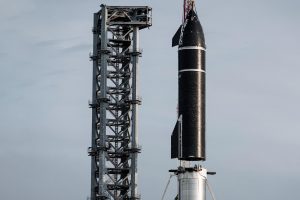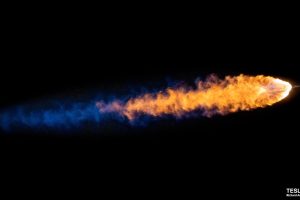- 🚀 SpaceX launched the Galileo L-13 mission, part of the EU’s navigation satellite constellation, from Cape Canaveral.
- 🛰️ The Falcon 9 booster used in this mission has completed its 22nd flight, previously supporting other significant missions.
- 🌍 The Galileo missions are managed by the EUSPA, enhancing navigation for over 4 billion users worldwide.
- 🤝 Collaboration between the European Commission, EUSPA, and ESA highlights commitment to innovation and market growth in Europe.
- 📡 The Galileo satellites aim to improve availability and navigation robustness and create new market opportunities.
- ⏭️ This launch marks SpaceX’s 90th of the year, with more missions, including Starlink and ISS crew launches, scheduled soon.
On a historic evening at Cape Canaveral, SpaceX successfully launched the Galileo L-13 mission, marking a significant milestone in global navigation satellite constellations. As part of a broader European Union initiative, the mission underscores the relentless progress in space technology and international collaboration. Let’s delve deeper into this remarkable achievement and its implications for the future.
The Launch of Galileo L-13: A Historical Context
The Galileo L-13 mission, managed by the European Union Agency for the Space Programme (EUSPA), is not just a testament to technological prowess but also a beacon of international cooperation. Launched on the evening of its announcement from Pad 40 at Cape Canaveral, Florida, the mission showcases SpaceX’s unparalleled capability in deploying critical satellite infrastructure.
The Falcon 9 Booster: A Reliable Workhorse
A key highlight of this launch was the reuse of the Falcon 9 booster, which successfully embarked on its 22nd flight. This resilient booster, previously employed in 12 Starlink missions and two cargo missions to the International Space Station, demonstrated remarkable endurance and efficiency. Its reusable design not only signifies cost-effectiveness but also heralds a new era of sustainable space exploration.
Galileo Missions: Enhancing Global Navigation
Administered by EUSPA, the Galileo satellites are recognized as the world’s most accurate positioning system. Their deployment enhances navigation services worldwide, impacting over 4 billion users. The mission’s success adds another feather to Europe’s cap as it fortifies its presence in the global space race.
Collaboration at Its Best
The seamless teamwork between the European Commission, EUSPA, and the European Space Agency (ESA) symbolizes a commitment to innovation, security, and economic growth. This triumvirate is employing space technology not merely for scientific advancement but also as a vehicle for economic opportunity, particularly benefiting SMEs and entrepreneurs within the European market.
The Road Ahead: More Launches on the Horizon
SpaceX’s achievement with the Galileo L-13 mission represents its 90th launch of the year, highlighting a robust schedule. The company shows no signs of slowing down, with upcoming launches including further Starlink missions aimed at expanding global internet coverage. Additionally, preparations are underway for a crewed mission to the International Space Station set for later in the month.
Conclusion: A Bright Future for Global Satellite Navigation
The successful launch of the Galileo L-13 mission by SpaceX is a promising advancement in satellite technology and international collaboration. It not only strengthens global navigation systems but also opens new avenues for commercial and technological ventures. As we look toward the future, the continued synergy between international agencies promises to yield further innovations that could transform our approach to navigation, communication, and exploration.





